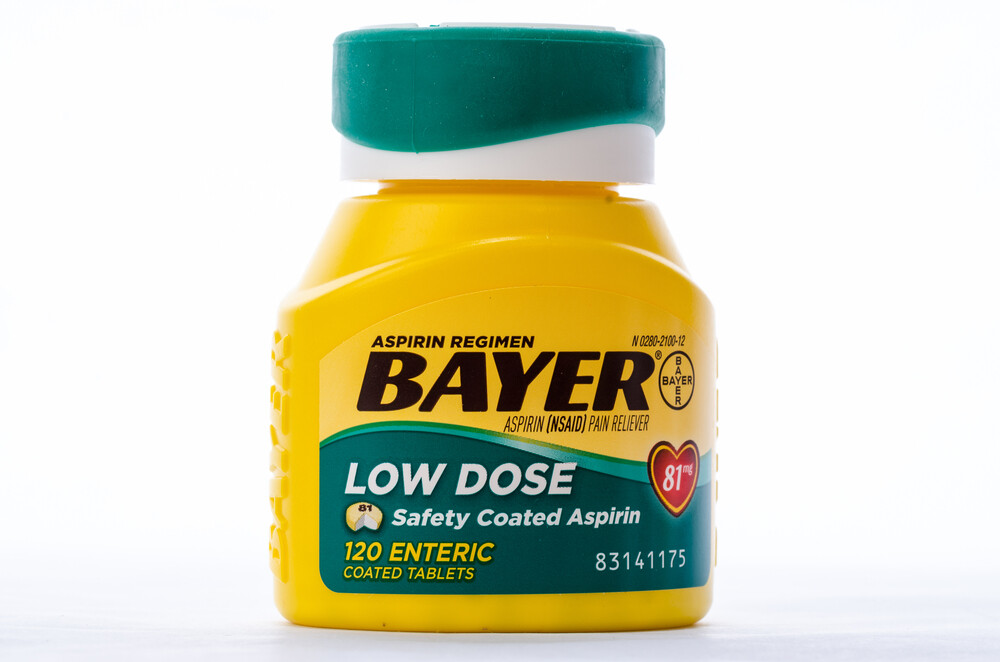I used to be able to confidently say that everyone was thoroughly familiar with World War II, but unfortunately, I don’t think that’s such a guarantee anymore.
Still, I think it’s safe to claim that most people with a brain possessing at least one to three wrinkles is aware of the extent of the atrocities committed by the Nazis during World War II. What they did was historically horrific enough that, again, for most sane people, they’re the quintessential example of human evil.
But of course, if everybody was as on the right side of history as they’d like to claim, it wouldn’t have been much of a fight, would it? And so, there are definitely people and corporations that would like their support for the losing, genocidal side to stay off their Wikipedia page.
Here are five companies that were perfectly happy to work with and for the Third Reich…
Chanel
Shutterstock
It’s hard to distance your company from Hitler when your namesake was hanging out with him and his closest confidants during the war. No, not as some secret agent of the Allied Forces, but in fact, as the opposite: a Nazi sympathizer and informant.
Coco Chanel was introduced to the Nazi through her highly inadvisable beau that would make your friend’s worst boyfriend seem like a saint: Baron Hans Gunther von Dincklage. Just from that name, you can probably guess which side he was on. It’s suspected that the only reason she never ended up serving looks in front of the Hague is because of the protection of her friend Winston Churchill. Definitely adds an air of menace to those Instagram-ready quotes like, “The most courageous act is still to think for yourself.”
Hugo Boss

Shutterstock
Another ill-judged fashion collaboration was between Hugo Boss and the Nazi Party. Hugo Boss isn’t quite as prominent these days as Chanel is, maybe because it was a little harder for them to dodge the stink. You might have heard of the Nazi “brownshirts.” Well, it was Herr Boss who designed and provided those very duds.
Styling the Third Reich would be bad enough on its own, but he also used forced labor to make the shirts themselves. Lest you think that this was a case of a hand being forced, conscripted into making one of the world’s most evil uniforms, the facts don’t plead that case.
Coca-Cola

Shutterstock
Money-driven Nazi sympathy wasn’t only the domain of those weak-boned European businessmen, either. Even one of the most iconic American companies ever, Coca-Cola, had dealings with the Axis that they’d rather not discuss now. I get it, white bears are a whole lot more family-friendly than black boots. Now, to be fair, it wasn’t coming straight from Atlanta headquarters. When Pearl Harbor was bombed, Coca-Cola stopped exports of their syrups and products to Nazi Germany and their German operation, Coca-Cola GmbH — though they notably didn’t have any problem with quenching Nazi thirst in 1940.
But the man in charge over there, an exceedingly Nazi-tolerant fellow named Max Keith, didn’t take this as a sign to stop working. He instead invented a new drink that could wet German whistles. He named it Fanta, and it was a massive hit. Did the U.S. Coca-Cola brand have anything to do with Keith’s continued soda-based sieg-heiling? No, they didn’t. At the same time, after the war, they applauded his shrewd business grindset and promoted him to be the head of Coca-Cola Europe.
IBM

Shutterstock
Computer giant IBM’s products were an absolute godsend for businesses looking to keep their books in order. If you wanted to efficiently track records and build a database, IBM was making exactly the technology you needed. Though their use extended beyond strictly the business world. For example, their products would be hugely helpful if you suddenly found yourself with a need to document, calculate and easily search through a database of people with specific religious and personal characteristics — something IBM, or as they named their brand-new polish outpost, Watson Business Machines, was happy to provide. After all, do you know how many computer punch cards you have to buy in order to track multiple countries’ Jewish populations?
Now, IBM still claims it had no idea what Watson Business Machines was up to. I guess they thought their Polish subsidiary operating during Nazi occupation was probably making punch cards for, uh, someone else.
Bayer

Shutterstock
Bayer — and the company it came out of, IG Farben — has a whole section on its website intended to atone and admit to its role assisting the Nazis. They made a statue and everything. Unfortunately, their mea culpa, mostly focused on forced labor, may paint their involvement as a little more hands-off than it was. For example, there are allegations that they used death-camp inmates for their own experiments, and were happy to share data with almost definitely the worst doctor of all time, “The Angel of Death” Josef Mengele.
His experiments consisted of a litany of truly evil things, like creating wounds and intentionally infecting them with gangrene, then rubbing glass shards and wood shavings into the area. You know, science stuff.
That’s all not officially proven or admitted, but less arguable is the fact that IG Farben created Zyklon B, the gas that was used in the gas chambers. Not the name recognition you want.

